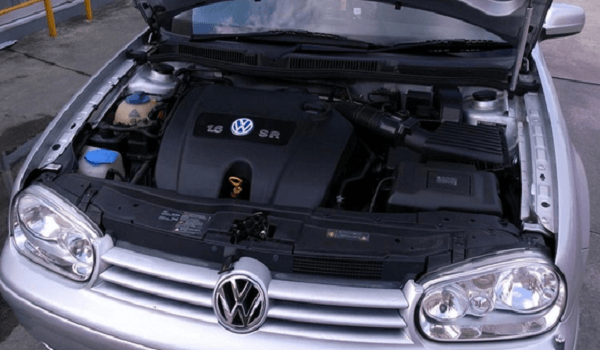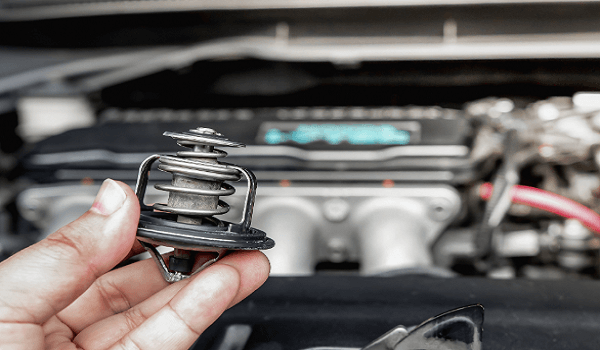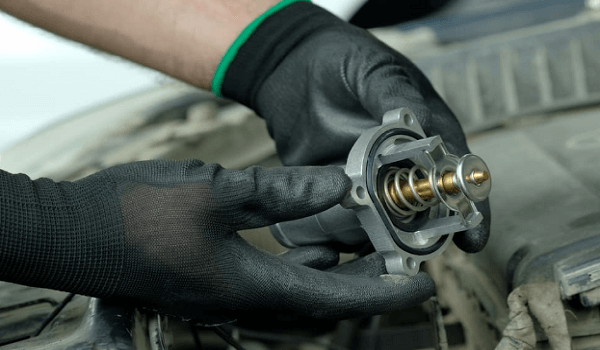Can You Drive A Car Without A Thermostat – A car’s engine is a complex system that relies on numerous components working together to keep it running smoothly.
One of the most critical components of a car’s engine is the thermostat.
A thermostat helps regulate the temperature of the engine, ensuring that it doesn’t get too hot or too cold.
But what happens when a thermostat fails? Can you drive a car without a thermostat? In this article, we’ll explore the answers to these questions.
What Does A Thermostat Do in A Car Engine?

To understand the importance of a thermostat in a car engine, we need to know how it works. A thermostat is a component that regulates the temperature of the engine. It does this by controlling the flow of coolant through the engine.
When the engine is cold, the thermostat remains closed, preventing coolant from flowing through the engine. This allows the engine to warm up quickly.
Once the engine reaches its optimal operating temperature, the thermostat opens, allowing coolant to flow through the engine, and cooling it down.
A thermostat is a critical component in a car’s engine because it helps maintain the proper operating temperature.
When an engine runs too hot, it can cause damage to the engine components, resulting in costly repairs.
On the other hand, if the engine runs too cold, it can reduce fuel efficiency, increase emissions, and cause unnecessary wear and tear on the engine.
How Does A Thermostat Work in Modern Cars?

In modern cars, thermostats are typically electronically controlled. The car’s computer monitors the engine’s temperature and sends signals to the thermostat to open or close as needed.
This helps ensure that the engine runs at the optimal temperature, regardless of external conditions.
Signs of A Faulty Thermostat

Like any component in a car’s engine, thermostats can fail over time. Some common signs of a faulty thermostat include:
- Engine temperature gauge reading too high or too low
- Engine overheating
- Reduced fuel efficiency
- Poor heater performance
- Coolant leaking from the engine
If you notice any of these signs, it’s essential to have your car checked by a qualified mechanic. Ignoring a faulty thermostat can cause significant damage to the engine and result in costly repairs.
Can You Drive A Car Without A Thermostat?

The short answer is technical, yes, but it’s not recommended. If a thermostat fails, you may be able to drive your car for a short period without it.
However, driving without a thermostat can cause numerous problems, including:
- Engine damage: Without a thermostat, the engine may overheat, causing damage to the engine components.
- Reduced fuel efficiency: A car’s engine operates most efficiently at its optimal temperature. Driving without a thermostat can reduce fuel efficiency, costing you more money at the pump.
- Increased emissions: When an engine runs too cold, it can increase emissions, harming the environment.
- Increased wear and tear: Driving without a thermostat can cause unnecessary wear and tear on the engine, resulting in costly repairs down the road.
How to Determine If It’s Safe to Drive Without A Thermostat

If you’re in a situation where you need to drive without a thermostat temporarily, there are a few things you can do to determine if it’s safe.
First, monitor the engine temperature gauge closely. If the engine temperature starts to rise rapidly, pull over and turn off the engine immediately.
Driving with an overheating engine can cause significant damage to the engine and result in costly repairs.
Second, pay attention to how the car is handled. If the car is running roughly or stalling, it could be a sign that the engine is running too hot or too cold.
In this case, it’s best to have the car checked by a qualified mechanic.
How to Drive A Car Without A Thermostat
If you’ve determined that it’s safe to drive your car without a thermostat temporarily, there are a few things you can do to minimize the risks. Here’s a step-by-step guide to driving a car without a thermostat:
Step 1: Remove the Thermostat
The first step is to remove the faulty thermostat from your car’s engine. This will allow coolant to flow freely through the engine, helping to regulate the engine temperature. To remove the thermostat, follow these steps:
- Locate the thermostat housing: The thermostat housing is typically located on the engine block or cylinder head.
- Drain the coolant: Before removing the thermostat, it’s essential to drain the coolant from the engine. This will prevent coolant from leaking out when you remove the thermostat.
- Remove the thermostat housing: Use a socket wrench to remove the bolts that hold the thermostat housing in place.
- Remove the old thermostat: Carefully remove the old thermostat from the engine. Be sure to note its orientation, so you install the new thermostat correctly.
- Install a new gasket: Before installing the new thermostat, you’ll need to install a new gasket.
- Install the new thermostat: Carefully install the new thermostat, ensuring that it’s oriented correctly.
- Reinstall the thermostat housing: Use a socket wrench to reinstall the bolts that hold the thermostat housing in place.
Step 2: Monitor the Engine Temperature
Once you’ve removed the thermostat, it’s essential to monitor the engine temperature closely.
Keep an eye on the temperature gauge, and if you notice the engine temperature starting to rise rapidly, pull over and turn off the engine immediately.
Step 3: Drive with Caution
When driving without a thermostat, it’s essential to be cautious. Avoid driving in extreme temperatures, as this can cause the engine to overheat.
Also, avoid idling for extended periods, as this can cause the engine to overheat as well.
Step 4: Check the Coolant Level
Without a thermostat, the coolant will flow freely through the engine, so it’s essential to check the coolant level regularly. Be sure to top up the coolant as needed to ensure that the engine stays properly lubricated and cooled.
How to Replace A Faulty Thermostat

If you’ve determined that it’s not safe to drive your car without a thermostat, the best course of action is to replace the faulty thermostat. Here’s a step-by-step guide to replacing a thermostat:
Step 1: Gather the Tools and Materials
To replace a faulty thermostat, you’ll need the following tools and materials:
- New thermostat
- New gasket
- Socket wrench
- Pliers
- Screwdriver
Step 2: Locate the Thermostat Housing
The thermostat housing is typically located on the engine block or cylinder head. Consult your car’s owner manual to locate the thermostat housing.
Step 3: Drain the Coolant
Before removing the thermostat, it’s essential to drain the coolant from the engine. This will prevent coolant from leaking out when you remove the thermostat.
Step 4: Remove the Thermostat Housing
Use a socket wrench to remove the bolts that hold the thermostat housing in place. Once you’ve removed the housing, carefully remove the old thermostat.
Step 5: Install the New Thermostat
Carefully install the new thermostat, ensuring that it’s oriented correctly. Be sure to use a new gasket when installing the new thermostat.
Step 6: Reinstall the Thermostat Housing
Use a socket wrench to reinstall the bolts that hold the thermostat housing in place.
Step 7: Refill the Coolant
Refill the coolant in the engine, ensuring that it’s at the proper level.
Common Mistakes to Avoid
When replacing or driving without a thermostat, there are a few common mistakes that you should avoid. Here are a few of them:
Forgetting to Drain the Coolant
Before removing the thermostat, it’s essential to drain the coolant from the engine. Forgetting to do this can result in a messy and potentially dangerous situation.
Installing the Thermostat Incorrectly
When installing a new thermostat, it’s crucial to ensure that it’s oriented correctly. Installing the thermostat incorrectly can result in engine damage and overheating.
Using the Wrong Coolant
Using the wrong coolant can also lead to engine damage. Be sure to consult your car’s owner’s manual to determine the correct type of coolant to use.
Overlooking Other Issues
Replacing a faulty thermostat can fix many engine temperature issues, but it’s essential to remember that there may be other underlying issues causing the problem.
Be sure to consult with a mechanic if you’re experiencing ongoing engine temperature issues.
Conclusion
In conclusion, a faulty thermostat can cause significant problems with your car’s engine temperature. If you’re experiencing engine temperature issues, it’s essential to diagnose the problem accurately and take the necessary steps to fix it.
In some cases, it may be safe to drive your car without a thermostat temporarily, but this should only be done as a last resort.
If you’re unsure whether it’s safe to drive without a thermostat, be sure to consult with a mechanic or automotive professional.
By taking the right steps to fix or replace a faulty thermostat, you can help ensure that your car stays running smoothly and safely.